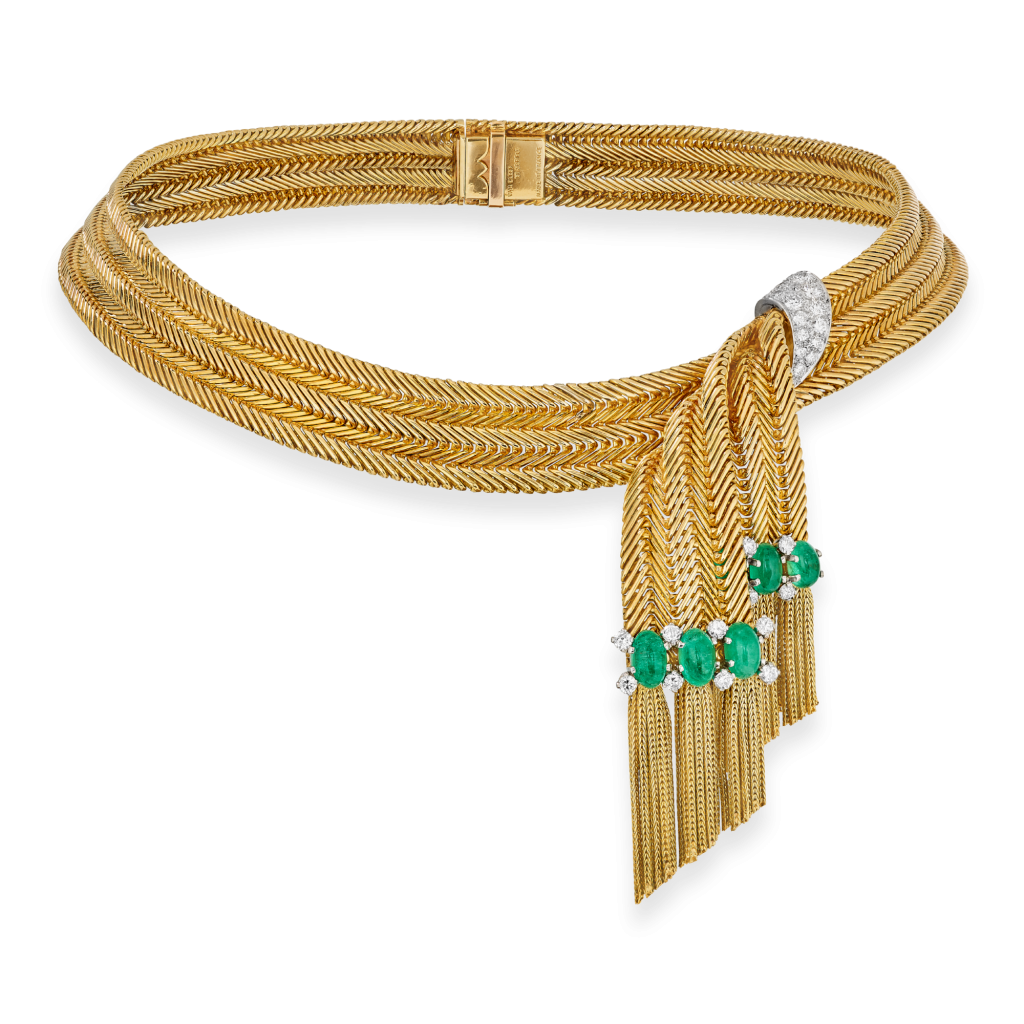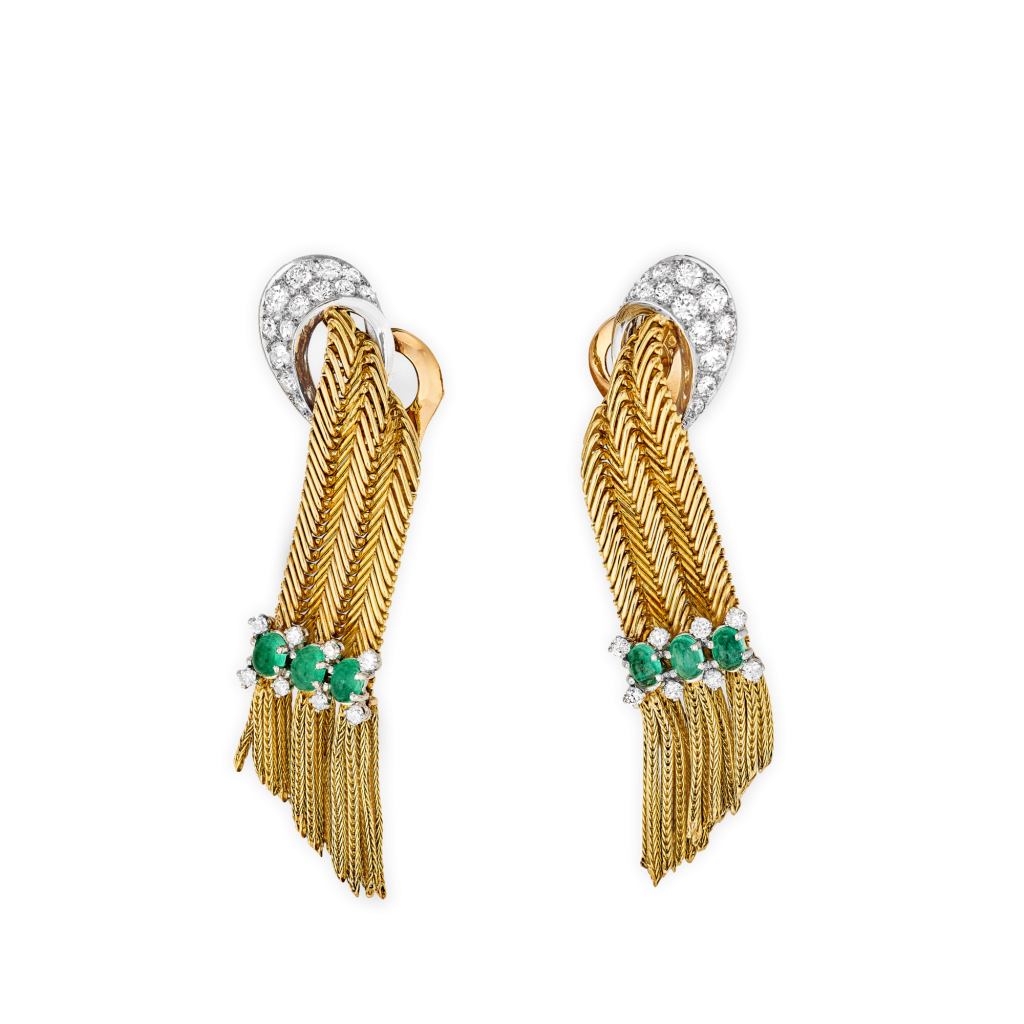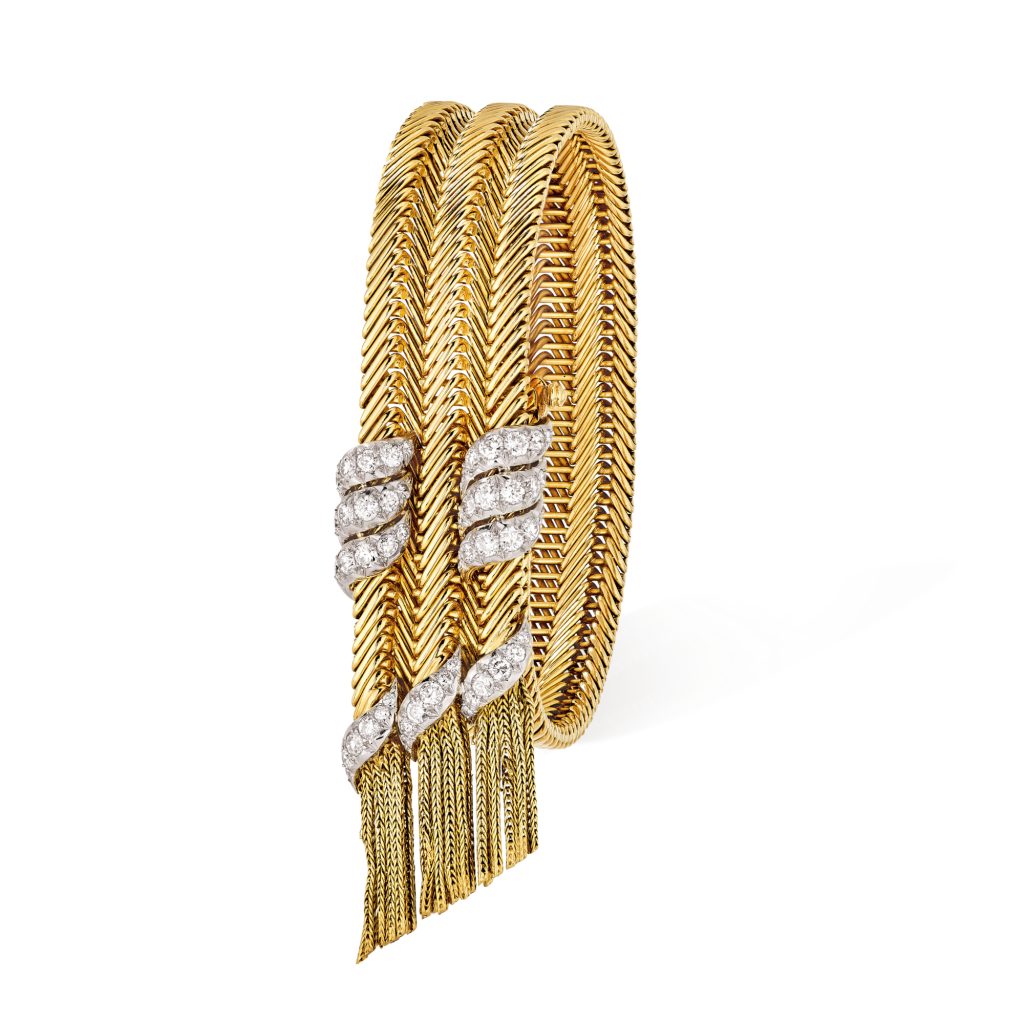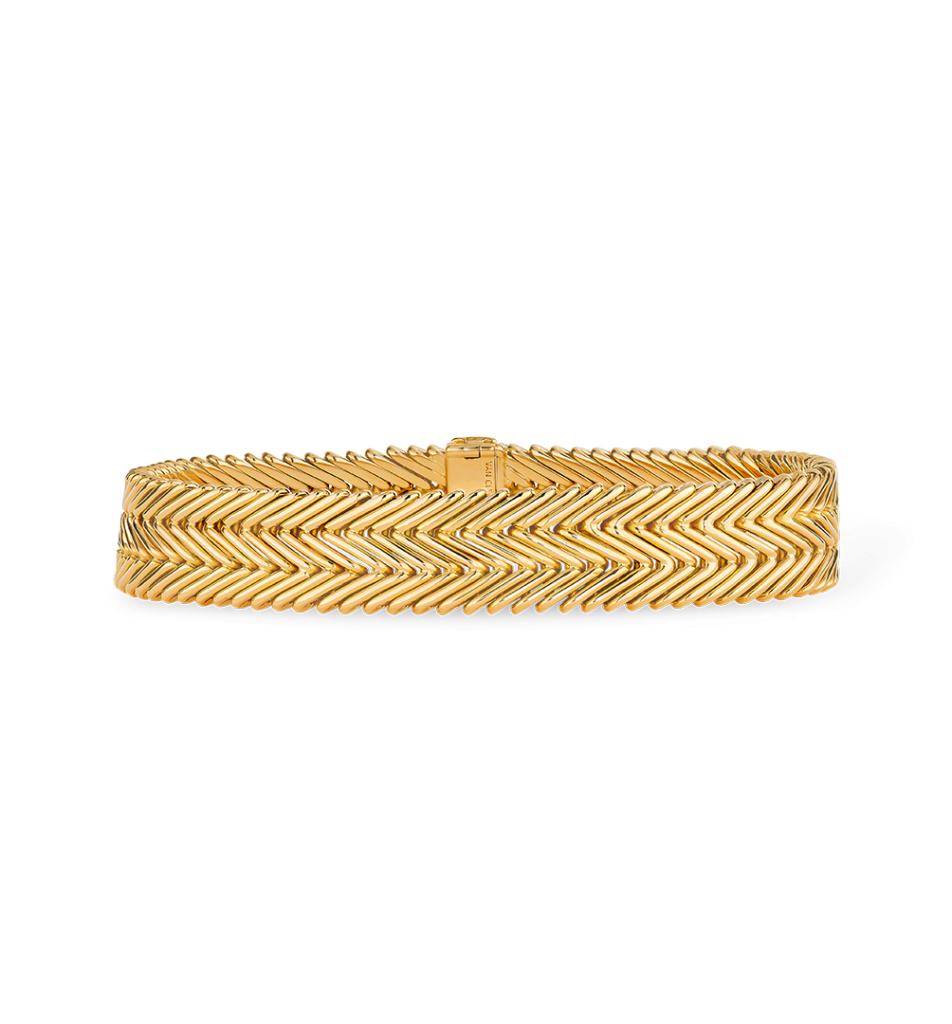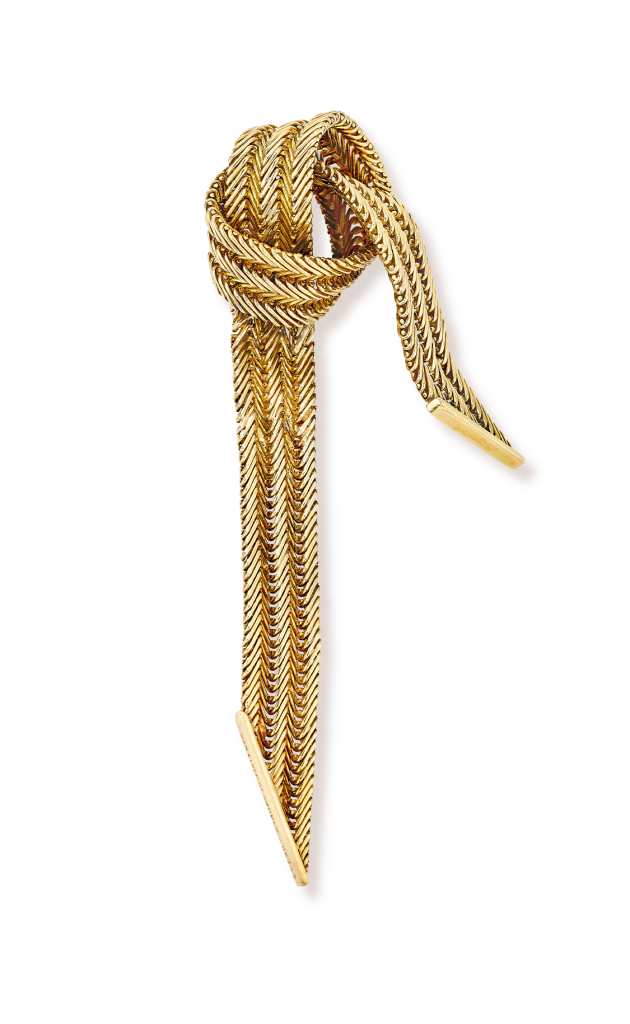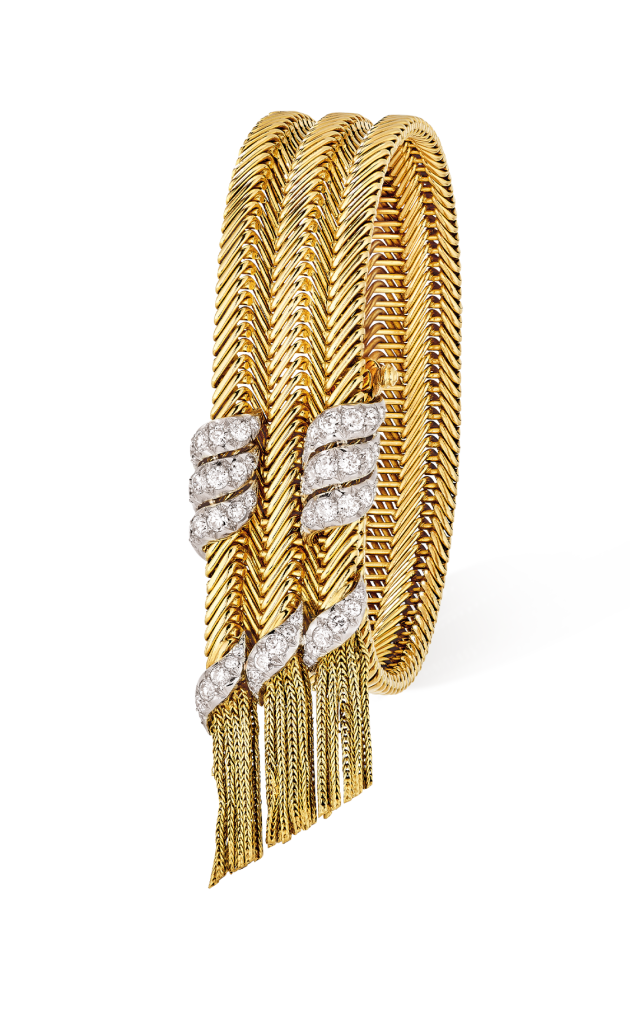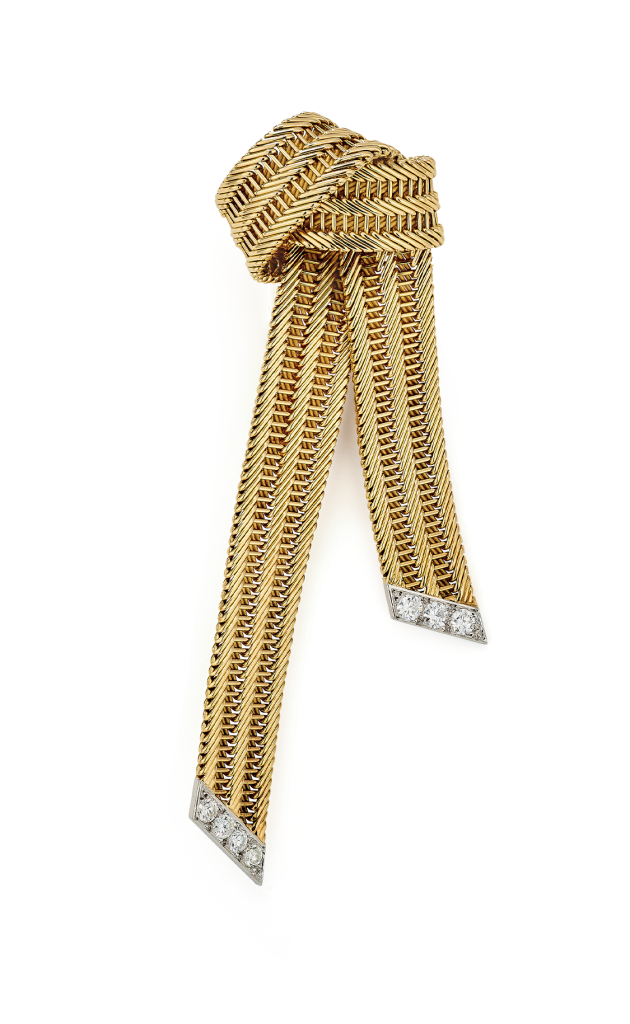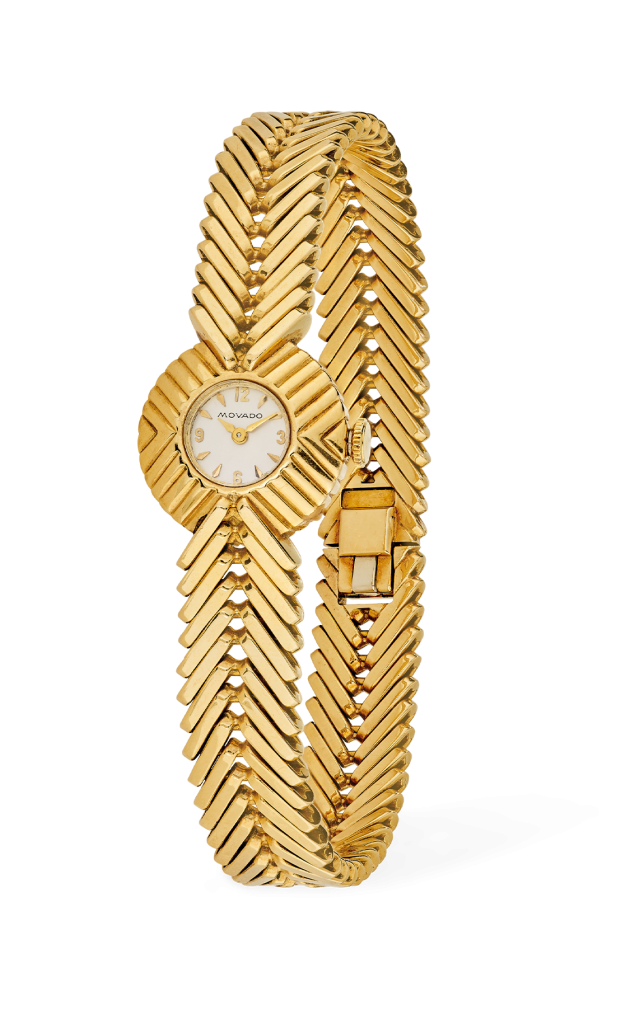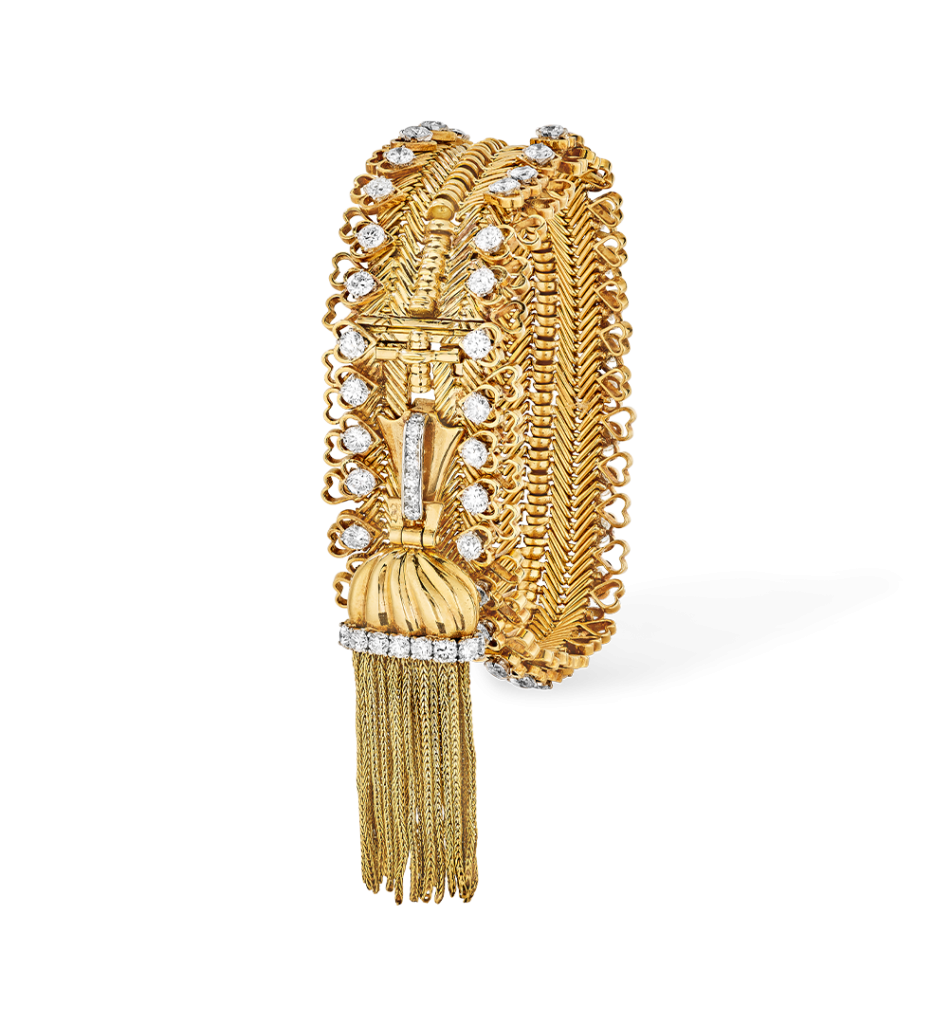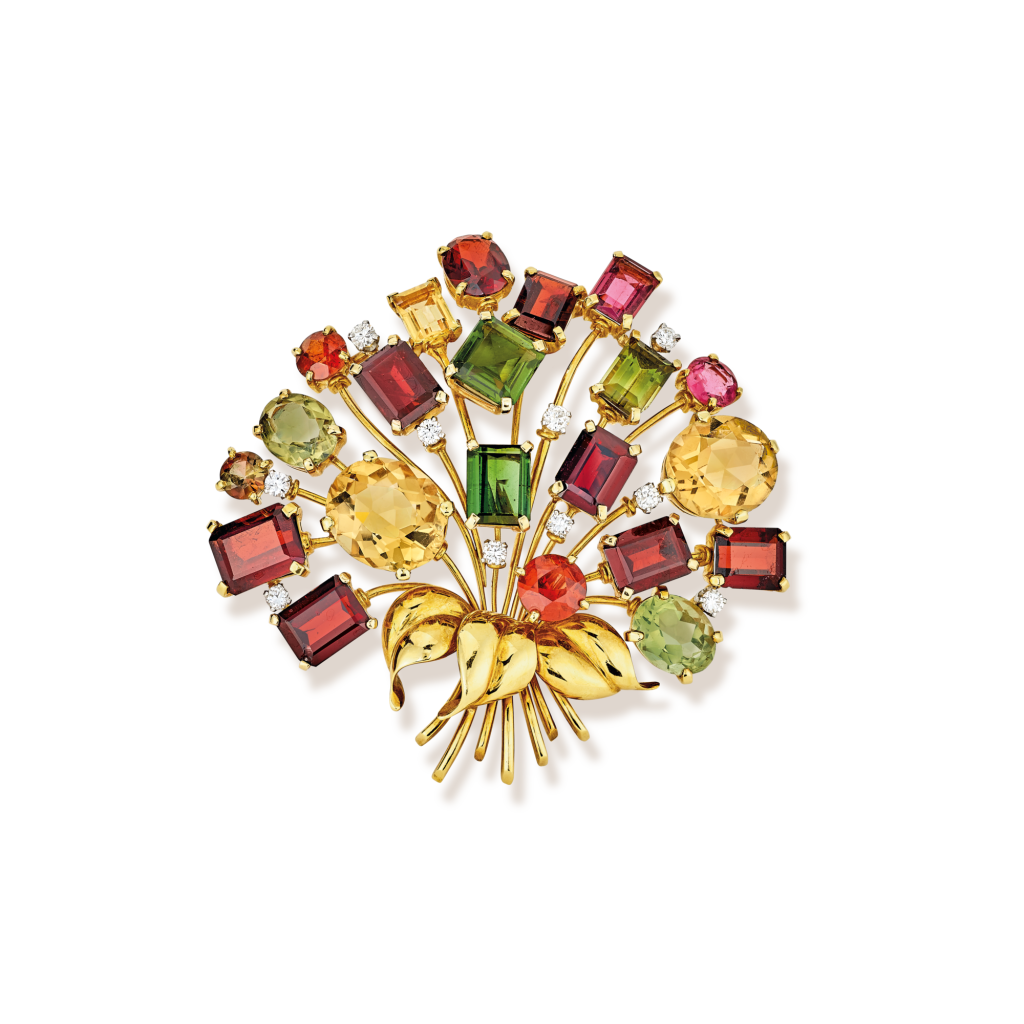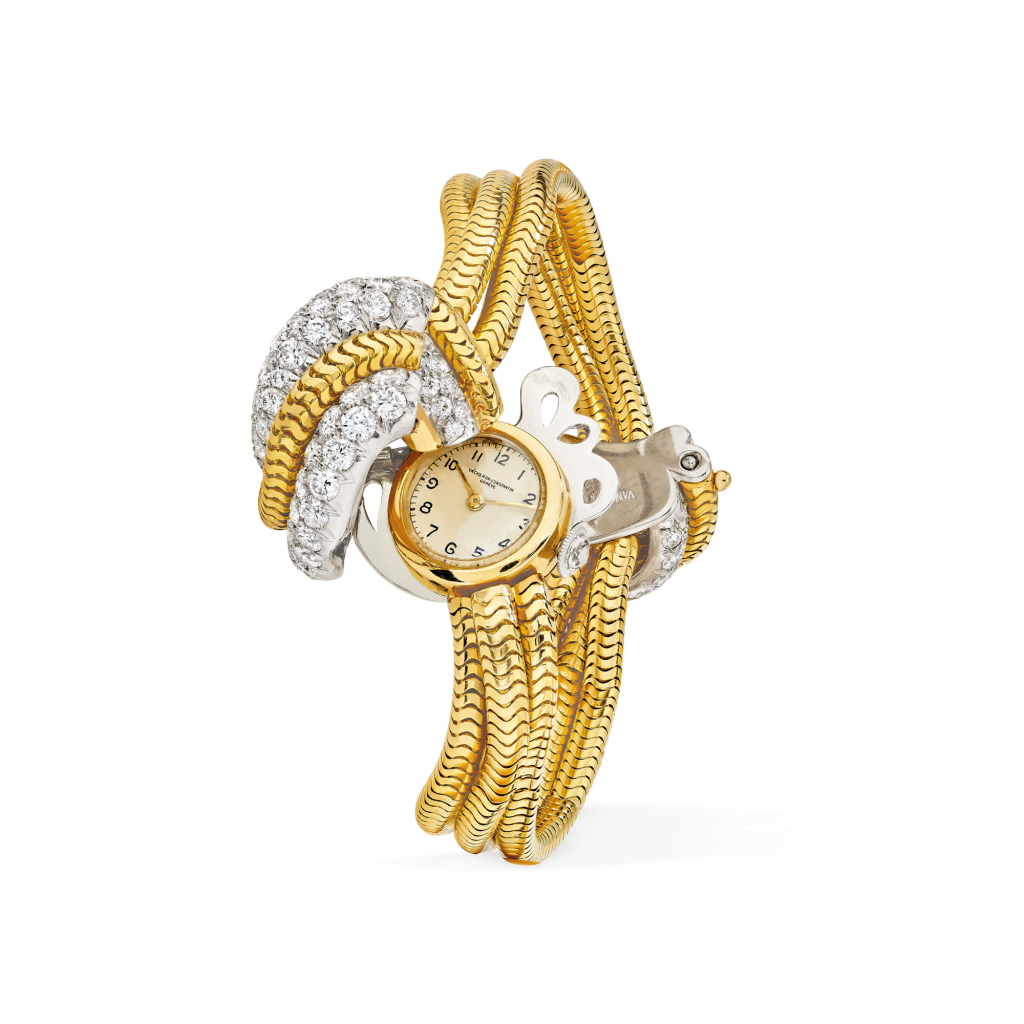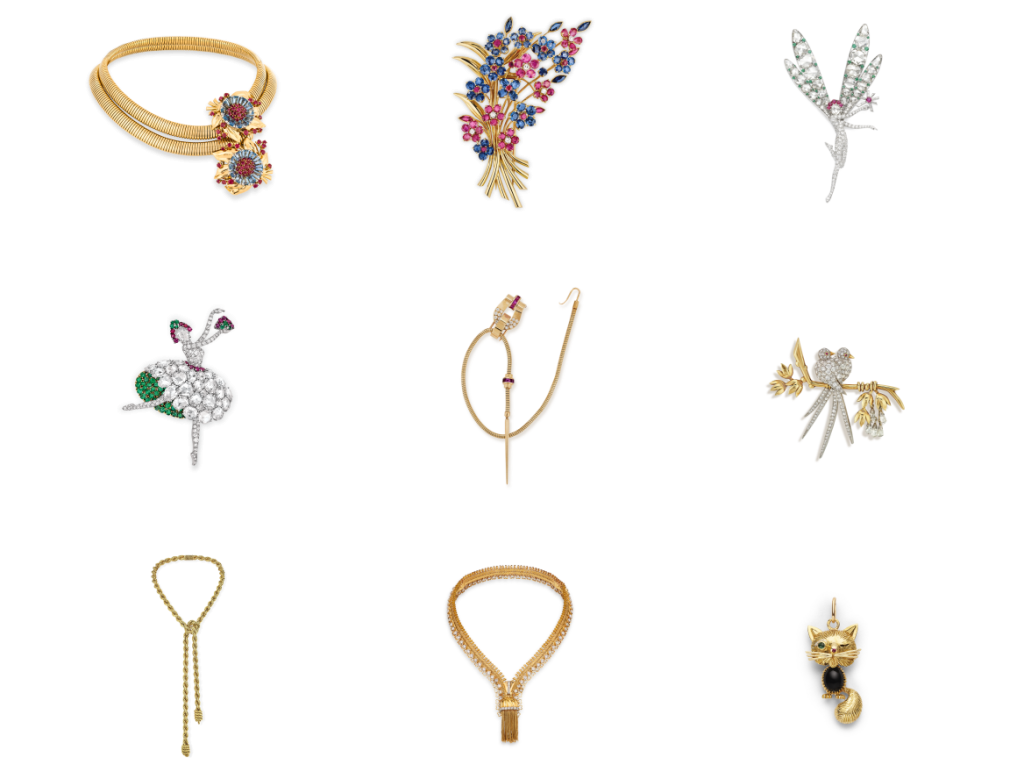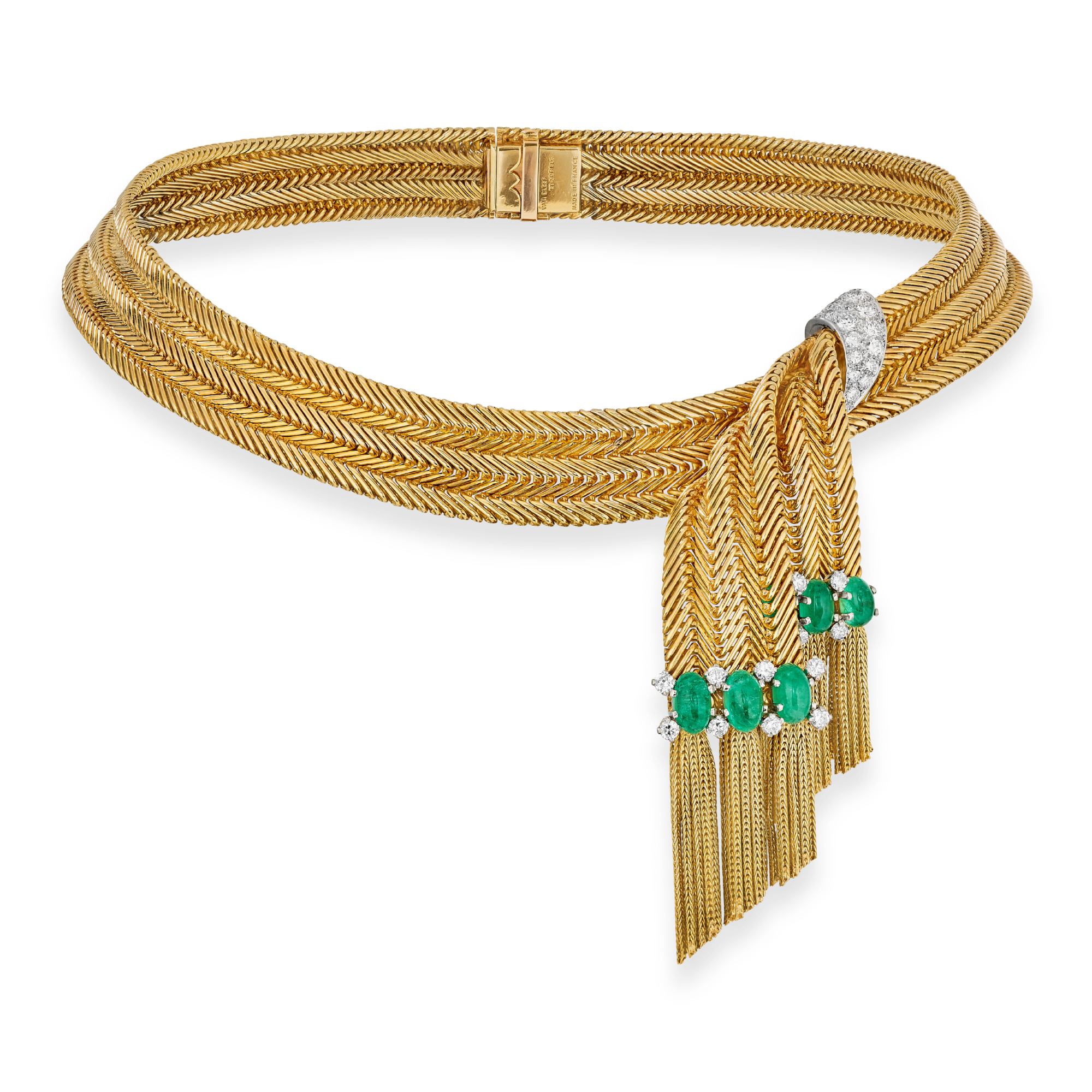
Serge Fabric necklace
Creation details
- Creation year 1953
- Usage Necklace
- Dimensions 483 mm
Linked pieces
The Serge Fabric jewelry line, so called for its reference to a weave of fabric, illustrates jewelry’s continued borrowing from the fashion arts throughout the 1950s.
The necklace is formed of three rows of yellow gold chain composed of oblong links worked in a herringbone pattern reproducing the weave of serge fabric. The ends of the mesh hang down, slightly off-center, from a stylized motif in platinum and diamonds, displaying the extreme flexibility of the “fabric.” Each row ends with an oval emerald cabochon framed with brilliant-cut diamonds from which small yellow gold chains are suspended. The matching earrings have the same motif crowned with a band pave-set with diamonds.
The origin of the Serge Fabric
This demi-parure in the Patrimonial Collection is part of a prolific line of jewelry inspired by “serge fabric.” This mesh was initially tried out on a “manchette” (cuff) bracelet adorned with a button and buttonhole in June 1951, when it was simply described as “fabric.” It was not until the following month that it received the name Serge Fabric when it replaced the “briquette” (small brick) and hexagonal meshes used for the Ludo bracelets, and then, in August of the same year, it was developed further to form clips. This mesh was also called “Jersey,” and was presented on its own or enhanced with a barrette of diamonds or a rosette of rubies, or set with emeralds.
Mesh jewelry, imitation of fabric
The diversification of meshes imitating fabric weaves began in the 1930s and was increased during the 1940s, boosted by the penchant for yellow gold. The serge mesh was the successor of these experiments, and illustrated not only the permanence of the dialog between the jewelry arts and fashion, but more particularly, the extent of its development in the early 1950s. Coat of Mail, Serge Fabric, Buttonhole Manchettes, and the Zip necklace were all created in 1951, accompanying traditional bows. Their “light, hinged mounts” were welcomed for lending “surprising movement to pieces of jewelry.”1Jeanne Stéphane, “Les bijoux et la femme,” L’Officiel de la couture et de la mode de Paris, no. 417–418 (December 1956): 130. “One would really think they were malleable fabrics. One expects to see them move, to feel them come to life.”2Paule Malardot, “Les beaux bijoux,” L’Aurore (December 21, 1946): 2.
Daytime jewelry in the 1950s
This renewed taste for yellow gold starting in the 1930s was, by the 1950s, concurrent with a strict codification of the ways of wearing jewelry. Yellow gold “was only used for composing jewelry to be worn during the day.”Paule Malardot, “Les beaux bijoux,” L’Aurore (December 21, 1946): 2. “This metal, with its warm reflections, is perfectly suited for natural light, for woolen materials, even pullovers, and for modern life. […] A fine gold necklace with flexible links goes very well with flannel.”Jeanne Stéphane, “Les bijoux et la femme,” L’Officiel de la couture et de la mode de Paris, no. 417–418 (December 1956): 130.
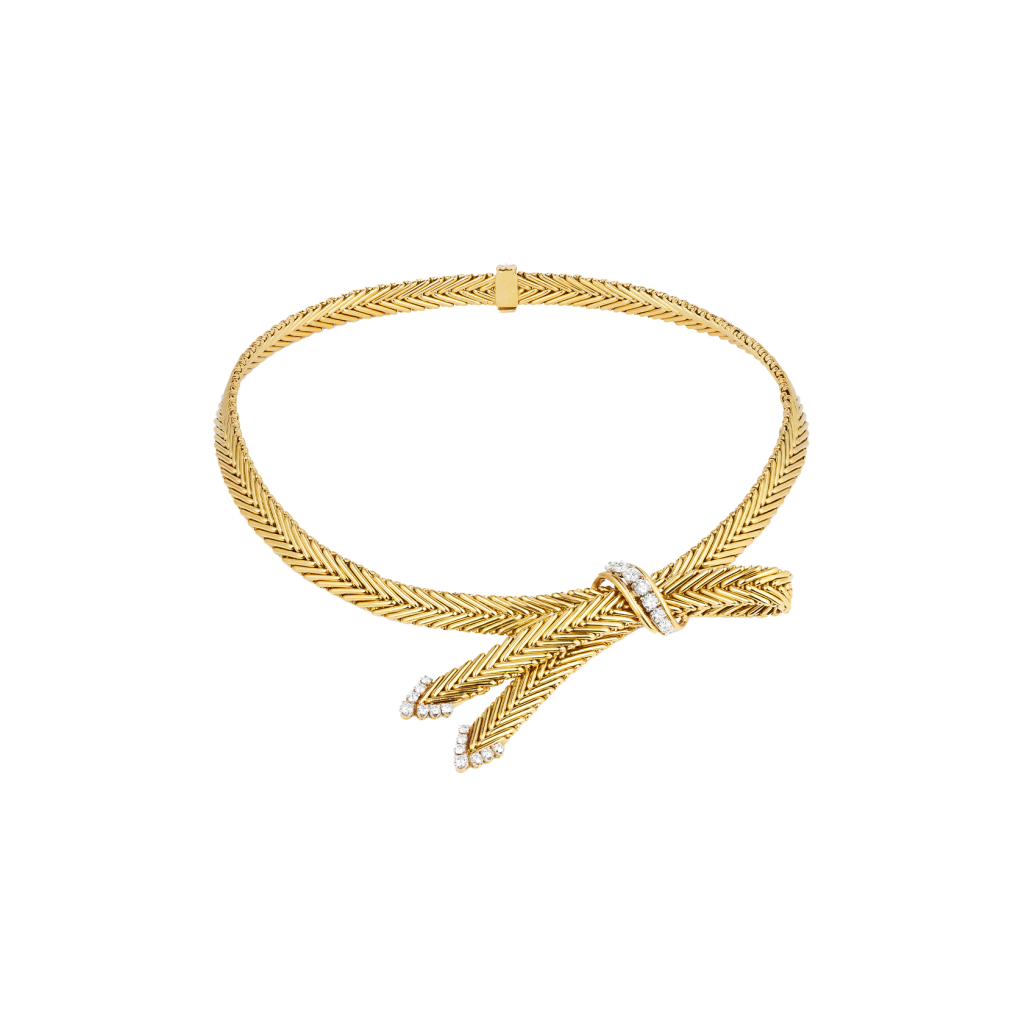
To go deeper
